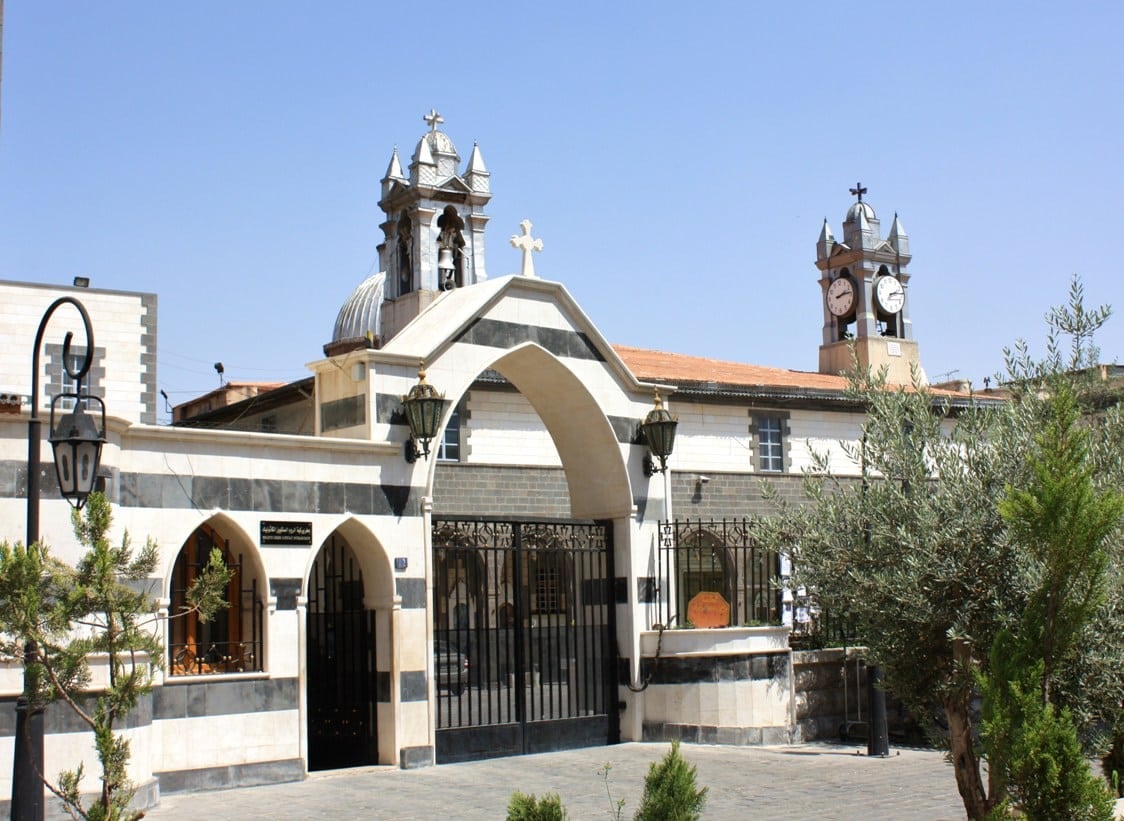The Church that Unites and Divides Orthodox and Catholics
Source: GreekReporter.com

Imagine walking into a church, where spectacular icons stare down from the walls, priests with long beards swing incense censers, and the chanting has that familiar Byzantine note as everything looks and feels Orthodox, but it’s all Catholic. It sounds strange, but you realize it completely when you hear it: The priests commemorate the Pope of Rome.
Welcome to the world of Eastern Catholics, or Greek Catholics, or the term many Orthodox still use: Uniates, from the Latin word ‘unio’, meaning ‘unity’ or ‘one’.
Their story is a living example of the turbulent history between the Catholic and the Orthodox Churches, where faith, power plays, and the centuries-old split between the Orthodox East and Catholic West become more evident than ever. And now, with Pope Francis having passed away, leaving everyone wondering where the dialogue he championed goes next, this whole Uniate question feels freshly relevant.
Who are the Uniates or Eastern/Greek Catholics?
To understand the Uniates, you must roll up your sleeves and dig into some pretty thorny ecclesiastical and geopolitical history.
Things got complicated after Constantinople fell, with Ottomans expanding their influence in Europe and various European powers playing chess with nations. Movements like the Union of Brest emerged from this historical pressure cooker in 1596.
The Union of Brest marks the critical moment when most leaders of the Ruthenian Orthodox Church, situated within the Polish-Lithuanian Commonwealth (in areas of modern Ukraine and Belarus), decided to formally join the Roman Catholic Church. This meant accepting the Pope’s authority and ending their communion with the Patriarch of Constantinople.
Big groups of Orthodox believers across Eastern Europe accepted Papal authority—something the Orthodox Church does not—but they held onto their Byzantine liturgy and customs, including traditions such as married priests.
Rome often framed this as bringing lost sheep back into the Church, a pastoral outreach to those who lost their communion with the Universal (Catholic) Church. But ask an Orthodox Christian, especially a Greek one with a long memory? “Outreach” isn’t quite the word they would use. It felt more like taking advantage of people caught between a rock and a hard place, a political move dressed up in religious robes. It wasn’t seen as brothers reuniting, but more like a political move to expand Rome’s influence eastwards.
Today, there are several Eastern Catholic or Greek Catholic Churches in many countries across Europe, primarily the Eastern part of the continent. In Greece, there is the “Greek Byzantine Catholic Church,” which belongs to this family of Orthodox-looking Catholics. It is separate from the Orthodox Church of Greece and the Catholic Church of Greece, which have approximately 350,000 faithful across the country.

Will Uniatism still be a sticking point between Catholics and Orthodox after Francis?
Even saying the word “Uniatism” feels loaded with controversy. Eastern Catholics mostly dislike it now, but many Orthodox use it deliberately when referring to them. It points directly at that historical method—bringing Eastern churches under Rome as a bloc, maintaining their style but changing their allegiance.
For ages, this was a massive issue in any serious talk between Catholics and Orthodox to bring the two most important Churches of Christianity closer together. The Orthodox saw it as Rome saying, “Your Church isn’t quite complete without us.” It felt like a rude gesture of superiority.
The late Pope Francis, to his credit, often spoke with real warmth and respect towards Orthodoxy. He tried to smooth things over. But the churches born from that old method? They’re still here. In 1993, the Balamand Declaration, a big moment in the official dialogue, basically said that Uniatism isn’t the way forward for the Union of the Catholics and the Orthodox, but also had to admit these Eastern Catholic Churches exist and have rights. It was progress, to the eyes of the official Orthodox Church, but it didn’t magically erase generations of mistrust.
Without Francis steering the ship, you have to wonder: will that cautious understanding and ecclesiastical rapprochement hold, or will old ghosts start rattling their chains again?

Greek Catholic Church: Caught between worlds
Approximately 18 million individuals are Uniate or Eastern or Greek Catholic Church members worldwide. Greece lacks a substantial Uniate history like Ukraine or Romania, with only 6,000 members, primarily in Athens. However, the whole issue resonates deeply with Greek Orthodox faithful, particularly among conservative members of the Church. It taps into that long story of Byzantium, the difficult Ottoman centuries, and a deep-seated wariness of Western interference—religious or otherwise—in Greece’s affairs. These Eastern Catholic communities—such as the incredibly resilient Ukrainian Greek Catholics who survived Soviet persecution—are often fiercely proud of their identity.
They see themselves as fully Catholic and fully Eastern, proudly holding both traditions authentically. However, many Orthodox continue to symbolize past conflicts; a living, breathing result of a unity strategy that they felt Rome imposed at a time when the Ottoman Muslims suppressed Constantinople and a significant part of Orthodoxy. Nevertheless, most Christians in both Western and Eastern Europe are still caught in this historical crossroad and the stubborn hope for eventual reconciliation—a hope Pope Francis embodied for many, and whose absence makes the path ahead feel a bit more shadowed.
The original article: belongs to GreekReporter.com .
